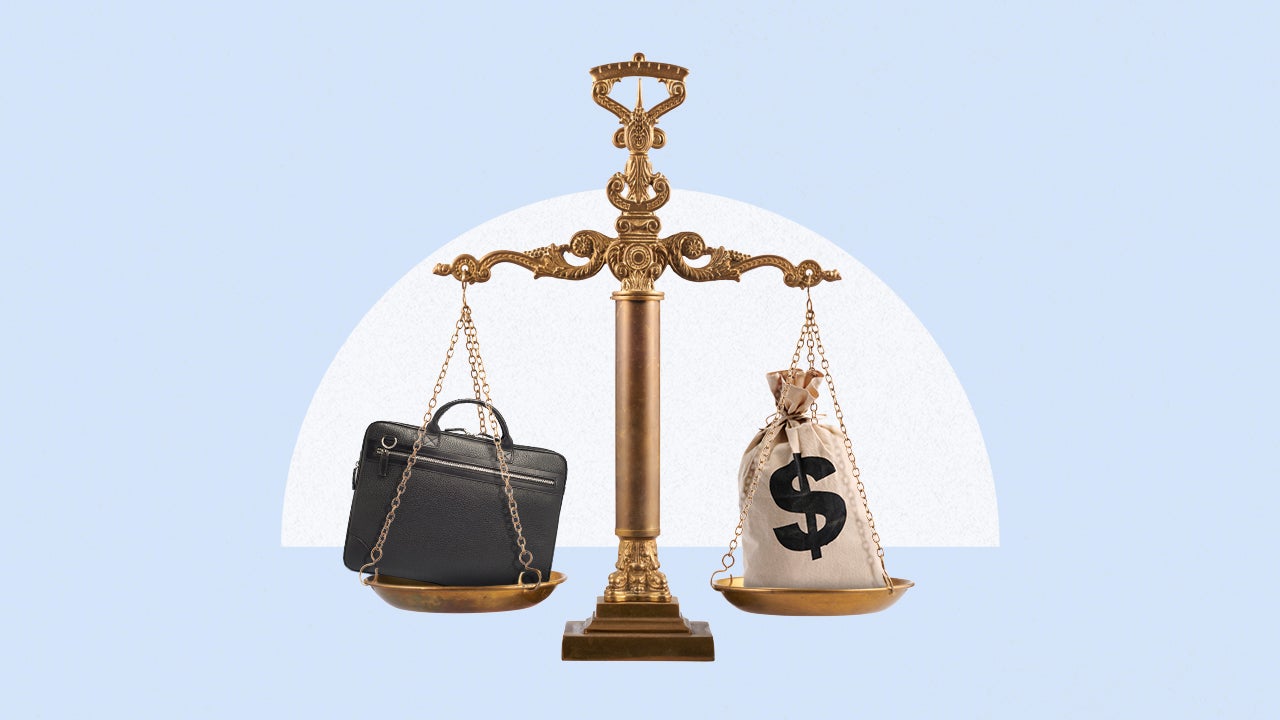Pros and cons of a business line of credit

Key takeaways
- Business lines of credit can help you build business credit while you improve cash flow.
- Lines of credit may have shorter repayment periods than a loan.
- Borrowers should be aware of the associated fees, which can add up quickly.
Cash flow ups and downs can hinder your company’s success, growth and longevity. Many small business owners turn to lines of credit to manage the unpredictability. According to the Federal Reserve’s 2024 Small Business Credit Survey, 40 percent of small businesses applied for a line of credit for funding, compared to 33 percent who pursued a business loan.
A business line of credit offers flexible access to funds, allowing you to borrow as needed, pay interest only on what you use, and reuse it as you repay. But high fees and short repayment terms mean it’s not the right financing option for everyone.
Consider the line of credit pros and cons to help you determine if a business line of credit is a good idea for your funding needs.
Business line of credit pros
Business lines of credit come with many key advantages that make them worth considering.
Improved cash flow
Past-due invoices and seasonal downturns often lead to cash flow issues in businesses. If you’re experiencing either or are dealing with an unexpected expense, it can be challenging to pay bills, take care of your employees and make investments in your business.
A business line of credit helps improve cash flow by giving you a pool of funds to pull from whenever you face these situations. So you won’t have to pause operations or shut your doors for good.
Accessible
If you were denied a bank loan, it’s likely due to your credit rating, time in business or annual income. However, you could have better luck with a business line of credit, even if you’re a startup or have bad credit, as some lenders have more lenient eligibility requirements.
For example, Fundbox’s line of credit accepts businesses with just three months in business and annual revenue of $30,000, some of the lowest requirements on the market.
Competitive interest rates
Interest rates on business lines of credit tend to be low compared to other types of business loans or business credit cards. You’ll generally qualify for competitive terms on a business line of credit if you meet the lender’s eligibility criteria and have a solid credit rating. But online lenders tend to charge higher rates compared to lines of credit from traditional banks and credit unions.
On average, business lines of credit have APRs ranging from 8 percent to 60 percent or higher. Based on data from the Q3 2024 Small Business Lending Survey, the average rates for new lines of credit were 7.44 percent to 8.57 percent, depending on whether it was a variable- or fixed-rate line of credit at a rural or urban bank. By comparison, the average rates for new term loans ranged from 7.75 percent to 8.50 percent.
Lenders may express line of credit rates in different ways. APR, factor rate or simple interest are common examples you could come across. This can make it harder for you to compare loan options.
To avoid confusion, consider the total interest cost and fees in the loan agreement to figure out which loan is offering you the best terms and rates.
Build a relationship with the lender
A business line of credit can help you build a strong relationship with your lender. By managing the credit responsibly, you show that you’re a reliable borrower, which can lead to a higher credit limit, easier renewal or better terms in the future. Opening a business checking account with the same lender can further strengthen the relationship by giving them insight into your cash flow and earning trust.
The lender may also be more lenient the next time you apply for business funding. Or you may qualify for better terms and lower interest rates since you’re already doing business with the lender.
May help build business credit
If the lender reports account activity to the business credit bureaus, you could build business credit with a business line. As your business credit score improves, you could access more funding opportunities and better financing terms.
Business line of credit cons
Despite their flexibility, business lines of credit also come with their fair share of drawbacks.
Fees
Business lines of credit may come with a number of loan fees to watch out for. These fees may drive up the overall cost of a business line of credit:
- Origination fee: Some lenders charge an origination fee when you take out a business line of credit. Some lenders may charge a flat fee, or you may have to pay a percentage of your total loan cost. This fee could be as low as 0.5 percent but can jump as high as 5 percent or more.
- Monthly maintenance fee: You may be subject to a fee incurred each month the business line of credit is open.
- Annual fee: Like a monthly maintenance fee, an annual fee may also apply each year the line remains open.
- Draw fee: You could pay a draw fee each time you withdraw from your credit line.
- Wire transfer fee: This fee may apply if you initiate a wire transfer to draw funds.
- Payment processing fee: Online payments come with a processing fee with some lenders.
- Late fee: You may be charged a late fee if you remit payment past the due date (unless a grace period applies).
- Early repayment penalty: Some lenders assess a penalty if you repay the lender before the term ends, while others don’t charge a penalty or even provide an early payment discount.
May have short repayment terms
For many business lines of credit, you can only pull funds from a business line of credit during the draw period. Once it ends, the amount you owe is converted to a loan and payable over a set period. The loan term may be brief, depending on the lender, essentially turning your line of credit into a short-term loan. Online lenders often have the shortest repayment periods, anywhere from 6 months to 24 months.
Will need to manage the loan effectively to avoid a cycle of debt
Because you can draw from the line up to your available credit as needed, you can easily get into a cycle of debt if you withdraw multiple times without repaying past loans in a timely manner. You’ll need to manage the debt effectively to stay on top of repayments.
To avoid getting into a cycle of debt, estimate the monthly repayments using a business loan calculator before you make a withdrawal. Then, plug the amount into your business budget and prioritize payments when paying for expenses. Be careful not to make too many withdrawals without a plan for repaying the loans.
How to determine if a business line of credit is right for you
A business line of credit may be the right choice for you if you fall into one or more of these situations:
- You need funding that you can access whenever needed
- You have short-term gaps in your cash flow
- You need a low loan amount
- You can pay back funds quickly
- You can adequately manage the line of credit, including whether loan repayments fit into your current budget
You’ll also need to consider whether to apply for a secured or unsecured line of credit.
A secured line may be better if your business has assets like equipment, inventory or real estate to offer as collateral. You can typically get more competitive rates and terms because the lender can seize the collateral if you default.
Unsecured lines of credit carry more risk for lenders, which often means higher interest rates and stricter eligibility requirements. You may also be required to personally guarantee the debt or agree to a UCC lien on your business assets.
Alternatives to a business line of credit
If a business line of credit isn’t the right fit for your company, there are alternatives to consider.
Term loans
Business term loans are a popular funding option offered by banks and online lenders. You’ll receive the funds in a lump sum and repay the balance in equal monthly installments over time. You can get short-term loans with terms of 24 months or less, or you can choose a long-term loan with loans up to 60 months or longer. The longer the term, the lower your monthly payments will be.
Some lenders have stringent time in business, credit score and annual revenue guidelines that can make it challenging to get approved. Online lenders tend to offer short-term loans with relaxed eligibility requirements, such as accepting a fair or poor credit score. You also may not be eligible for the best rates, especially if you have poor credit or are a startup business.
You can find lenders that specialize in bad credit business loans if you have less than ideal credit when applying.
Invoice factoring
Invoice factoring involves selling your unpaid invoices for cash. Most factoring companies offer up to 90 percent of the invoice value. They also assume responsibility for collecting what’s owed. Once the invoice is paid, you’ll receive the remaining balance minus any applicable fees.
This funding alternative is ideal if you need fast cash, but the fees are usually high. The fees may also go up depending on how long it takes customers to take care of the invoices.
Invoice financing
With invoice financing, you can get an advance of up to 90 percent on your accounts receivable — or unpaid invoices. When you receive payment, you’ll repay the amount advanced and any applicable fees to the financing company. With this option, you take on the responsibility for collecting payments. Like invoice factoring, you’ll have to watch out for high rates and fees.
Businesses may also qualify for grants which don’t need to be repaid. Grants are often available at the local, regional or national level. Funding is often available to:
- Women-owned businesses
- Minority-owned businesses
- Veteran-owned businesses
Merchant cash advances
Merchant cash advances (MCAs) are more easily accessible than business lines of credit and traditional business bank loans. They’re typically one of the easiest bad credit business loan options available. Instead of heavily weighing your credit score, revenue and time in business, the lender evaluates your credit card sales to determine your eligibility for funding.
If approved, you’ll receive a lump sum, typically payable in a year or less, through a percentage of daily credit card sales. Despite its convenience, this funding solution also comes with steep fees based on a factor rate. The factor rate, such as 1.10, gets multiplied by the entire loan amount to determine the loan cost and often converts to high interest rates.
And since these are cash advances and not loans, MCAs are not subject to usury laws, which protect people from being charged excessive interest charges. In some cases, it’s possible to get stuck with triple-digit APRs. So, a merchant cash advance should only be used to meet a short-term funding need that can be paid back quickly.
Crowdfunding
You can steer clear of financing to start or grow your business with crowdfunding. It requires you to raise funds for your business either through donations or in exchange for a percentage of your company’s equity or some other incentive. Crowdfunding is an ideal way to avoid all the red tape of applying for a business line of credit or other forms of business financing. This form of financing doesn’t consider your business revenue or credit score. Plus, you can garner increased exposure for your business.
Still, you’ll likely commit a lot of time to the project and risk your idea being stolen. You’ll also need a strong network to reach your fundraising goals, either through your personal network of friends and family or the crowdfunding platform’s network. If you don’t reach your goal, some platforms like Kickstarter won’t allow you to keep the donations raised.
Business credit cards
Business credit cards are another possible funding source for your company. If you have good credit, they generally come with generous spending limits. And some offer sign-up bonuses and interest-free introductory periods. Plus, you can easily track business spending, access employee cards and take advantage of business-related perks and discounts.
But there are significant downsides. Business credit cards are not covered under the Credit CARD Act of 2009, which comes with a host of consumer protections, including the mandatory disclosure of interest rate increases.
Interest rates may also be high compared to business lines of credit. Business credit cards can see APRs between 18 percent and 35 percent. You’ll also need strong credit to be eligible for the best cards; otherwise, you may have to apply for a secured business credit card.
Before you consider any type of business loan, use a business loan calculator. Doing so can help you determine the overall cost of the loan, ensuring you can afford the financing you select.
Bottom line
Understanding the business line of credit pros and cons is key to deciding whether this financing option fits your business. The best lines of credit can help you build business credit, reinforce your lender relationship and offer better financing terms than other funding alternatives. But fast repayment terms, fees and the potential for debt accumulation could derail your business finances if not properly managed.
Alternatives like term loans, merchant cash advances, or invoice financing may be a better fit depending on your business’s financial health and goals.
Frequently asked questions
Why we ask for feedback Your feedback helps us improve our content and services. It takes less than a minute to complete.
Your responses are anonymous and will only be used for improving our website.
You may also like

Secured vs. unsecured business line of credit

Pros and cons of a business bank loan

Pros and cons of bad credit business loans



